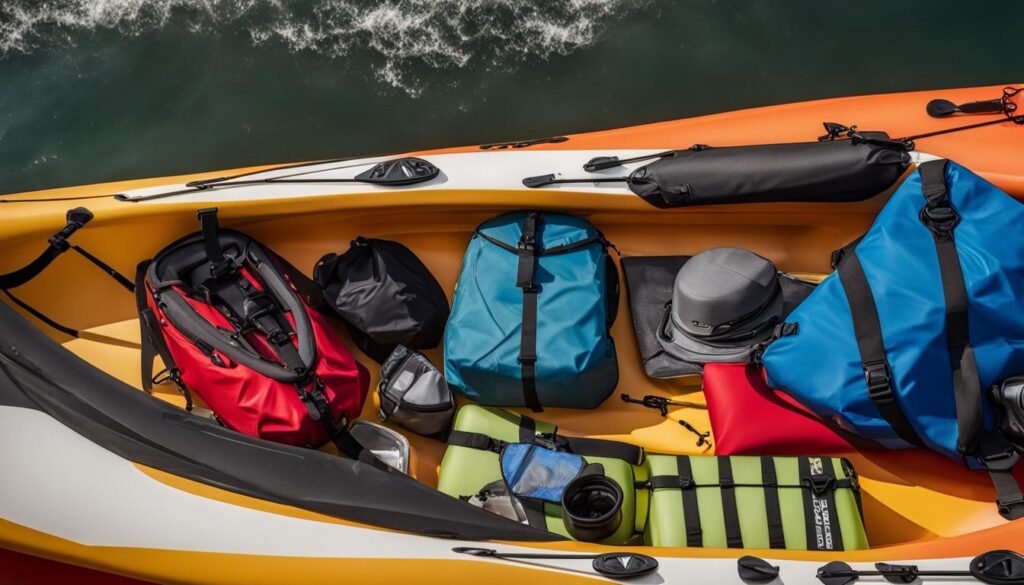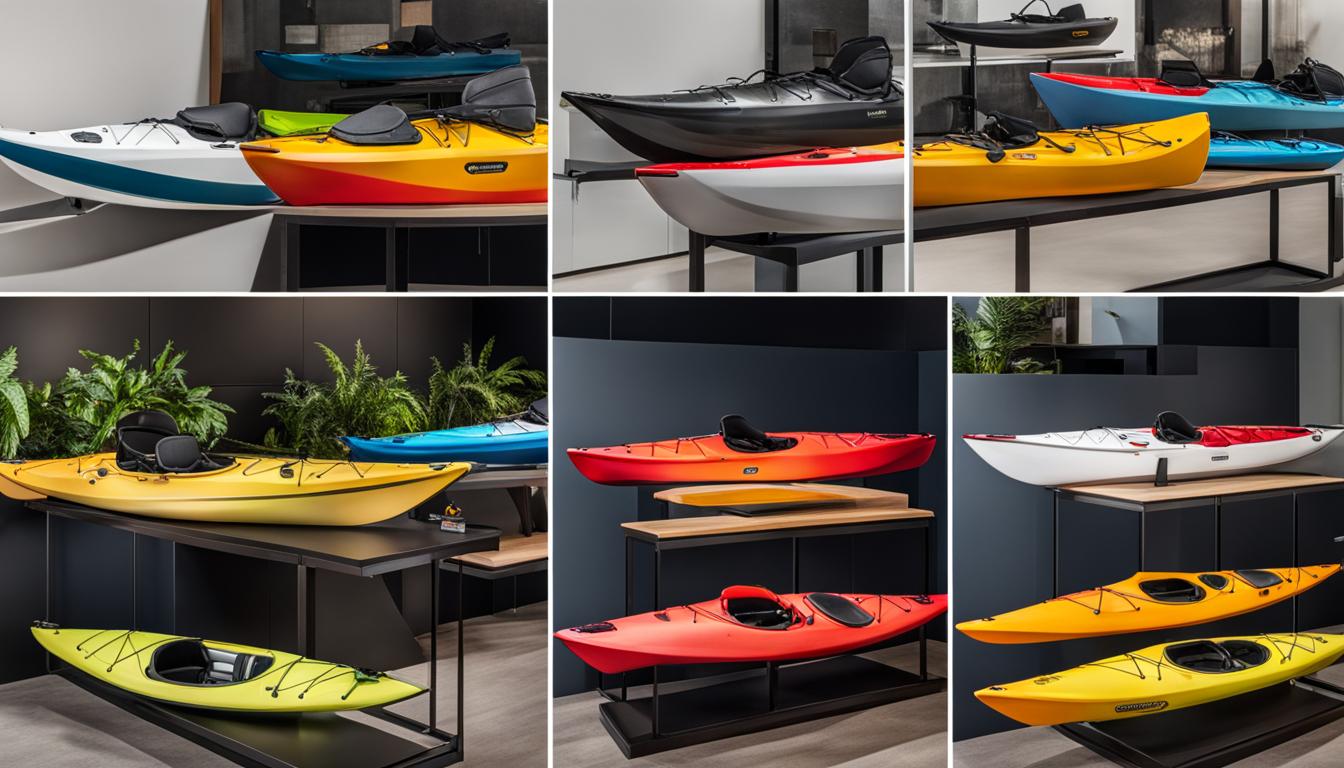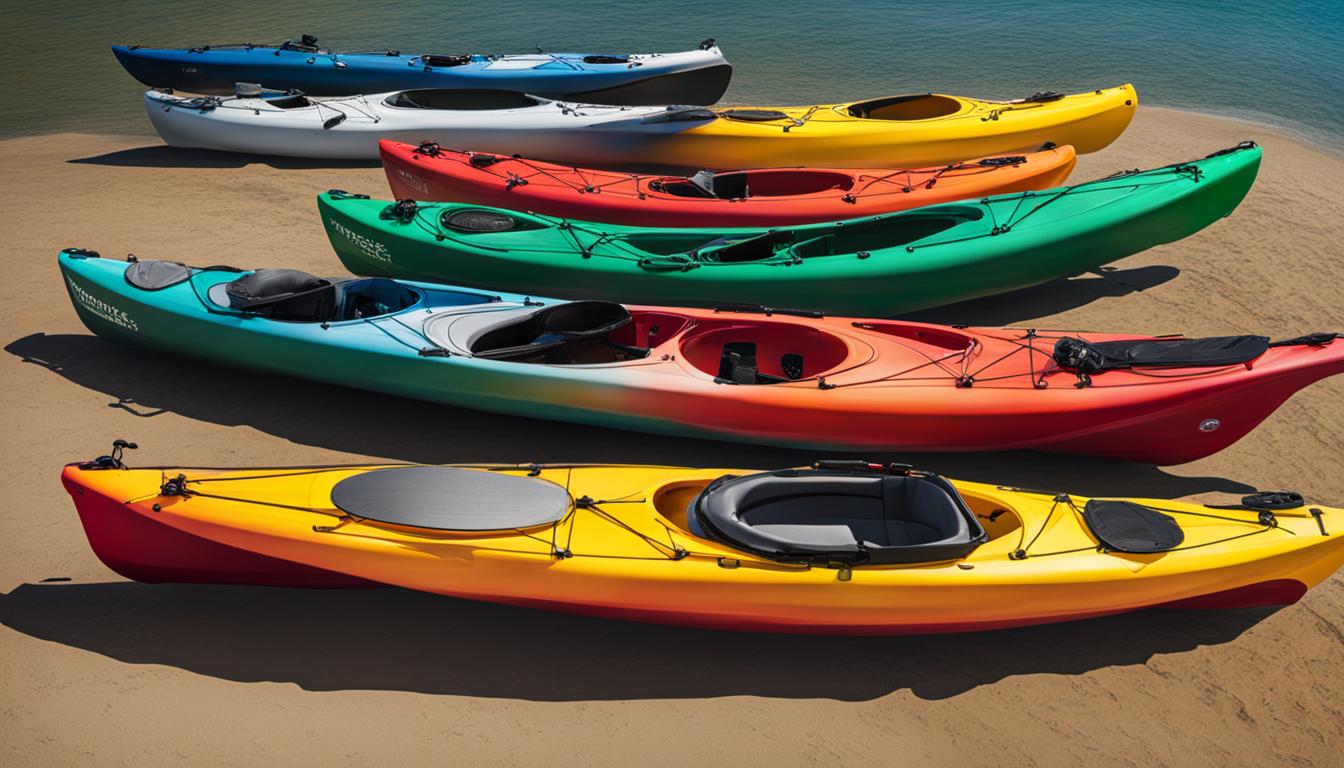When you’re in the market for a used kayak, it’s essential to know how to inspect it properly. You want to make sure that you’re investing in a kayak that is in good condition and will serve you well on your paddling adventures. By checking for damage, wear and tear, and other key factors, you can evaluate the kayak’s overall condition and make an informed decision.
During your inspection, keep an eye out for any signs of damage, such as cracks, dents, or deep scratches. These could indicate structural issues that may affect the kayak’s performance and safety. Look closely at the kayak’s hull, which is the bottom part, to ensure there are no significant deformities or signs of repairs.
Additionally, pay attention to wear and tear. Check for signs of excessive fading, peeling, or flaking of the kayak’s outer layer. Inspect the hardware, including the handles and bungee cords, to see if they are intact and functioning properly. It’s also crucial to examine the seat and accessories, such as paddles and life vests, for any wear or damage.
Key Takeaways:
- Inspect the kayak’s hull for cracks, gouges, or deformities.
- Check for signs of previous repairs on the kayak.
- Look for wear and tear on the kayak’s outer layer, hardware, and accessories.
- Ensure the seat and paddles are in good condition.
- Consider the overall condition of the kayak before making a purchase.
Buying the Right Kayak for Your Paddling Preference
When it comes to buying a used kayak, it’s essential to consider your paddling style and preferences. Not all kayaks are created equal, and choosing the right one can greatly enhance your kayaking experience. As you assess potential options, keep in mind the following factors:
Type of Kayak
Begin by determining the type of kayak that best suits your needs. Recreational kayaks are great for calm waters and leisurely paddling, while touring kayaks are designed for longer trips and improved tracking. Racing kayaks, on the other hand, are built for speed and maneuverability. Consider your intended use and select a kayak that aligns with your desired activities.
Paddles and Accessories
Assessing the condition of the kayak’s paddles and accessories is crucial to ensure a seamless paddling experience. Examine the paddles for any signs of damage, such as cracks or bent shafts, as this can significantly impact your paddling efficiency. Additionally, inspect the accessories included with the kayak, like spray skirts or life vests, to confirm their functionality and condition.
Kayak Seat Condition
The comfort of your kayak seat can make all the difference during long paddling adventures. Take a close look at the seat’s condition, checking for any tears, excessive wear, or broken straps. A well-maintained seat with proper back support will keep you comfortable and prevent any discomfort or strain during your kayaking trips.
By carefully considering these factors when purchasing a used kayak, you can ensure that you find the right vessel to suit your paddling style and preferences. Remember to thoroughly assess the paddles and accessories, as well as the condition of the kayak seat. With a kayak that meets your needs, you’ll be ready to embark on exciting adventures on the water.
Inspecting the Kayak’s Hull Integrity
When purchasing a used kayak, one of the most important aspects to consider is the integrity of its hull. The hull plays a vital role in the kayak’s performance and overall durability. By inspecting the hull, you can identify any potential issues or signs of repair that may affect the kayak’s seaworthiness.
To begin your inspection, carefully examine the entire surface of the hull. Look for any visible cracks, gouges, or deformities. These can be indicators of structural damage that may compromise the kayak’s stability and safety on the water. Pay close attention to areas where the hull may have come into contact with hard objects, such as rocks or docks.
In addition to physical damage, also look for any signs of previous repairs. These repairs may have been made to fix cracks or holes in the hull. While repairs themselves are not necessarily a deal-breaker, it’s important to assess the quality of the repair work. Look for any uneven patches, mismatched colors, or areas where the repair may be deteriorating. A poorly executed repair can weaken the hull and potentially lead to further damage.
| Signs of Hull Damage | Notes |
|---|---|
| Cracks, gouges, or deformities on the surface | Indicators of structural damage |
| Previous repairs with uneven patches or deteriorating areas | Poor repair quality can weaken the hull |
Remember, a thorough inspection of the kayak’s hull is crucial to ensure its overall integrity. By paying attention to signs of damage and repair, you can make an informed decision about the condition of the kayak and its suitability for your needs.
Evaluating the Kayak’s Storage and Maintenance
Proper storage and maintenance are crucial for ensuring that your used kayak remains in good condition and performs optimally. By evaluating the storage methods used by the previous owner and conducting waterworthiness tests, you can make an informed decision about the kayak’s suitability for your needs.
Storage Evaluation
The way a kayak is stored can have a significant impact on its longevity and condition. When inspecting a used kayak, inquire about how it was stored by the previous owner. Ideally, the kayak should have been stored in a dry and protected environment, such as a garage or shed, to safeguard it from extreme temperature variations and harmful UV rays. Look for any signs of warping, hull deformities, or discoloration that may indicate improper storage. These issues can affect the kayak’s performance and structural integrity.
Waterworthiness Tests
To ensure that the kayak is waterworthy and free from any hidden issues, it is essential to conduct waterworthiness tests. Begin by thoroughly examining the kayak’s hull for any cracks, gouges, or areas that may have been repaired. These repairs could weaken the hull and compromise its stability. Inspect the kayak’s deck for any signs of damage, such as deep scratches or dents that may affect its buoyancy.
Next, check the kayak’s hatches, bulkheads, and cockpit for any signs of water damage or mold growth. If the kayak was stored outside without proper protection, it may have been exposed to water infiltration, leading to potential structural issues. Additionally, test the kayak’s skeg or rudder system, if applicable, to ensure that they are functioning correctly and smoothly.
By thoroughly evaluating the kayak’s storage and conducting waterworthiness tests, you can determine if the used kayak is worth investing in. Taking the time to inspect these aspects will give you peace of mind and ensure that you can enjoy your paddling adventures without any unexpected surprises.

Testing the Kayak’s Performance on the Water
Taking the kayak for a test paddle is a crucial step in assessing its waterworthiness and ensuring it meets your needs. A thorough test will allow you to spot common issues in used kayaks and determine if the kayak is suitable for your paddling style and preferences.
During your test paddle, pay close attention to the kayak’s performance in terms of comfort, stability, and maneuverability. Assess how the kayak handles different water conditions, such as calm lakes or choppy rivers. Take note of any discomfort or strain on your body, as this may indicate an ill-fitting seat or inadequate padding.
Additionally, keep an eye out for any leaks or issues with the rudder or skeg. A well-maintained kayak should not have any significant water ingress or control problems. Remember to test the kayak’s tracking and turning capabilities, and ensure that the rudder or skeg operates smoothly.

| Performance Aspect | Test Criteria |
|---|---|
| Comfort | Assess the seat, padding, and legroom for comfort during extended paddling sessions. |
| Stability | Test the kayak’s stability by leaning slightly to each side and assessing how it responds. |
| Maneuverability | Take the kayak through various turns to evaluate its maneuverability and responsiveness. |
| Leakage | Paddle in calm water and check for any water ingress that may indicate leaks or cracks in the hull. |
| Rudder/Skeg Functionality | Engage and disengage the rudder or skeg to ensure they operate smoothly, aiding in tracking and controlling the kayak. |
By conducting a comprehensive water test, you can gain valuable insights into the kayak’s performance and identify any potential issues that may require further inspection or maintenance. Consider these observations alongside the results of your overall inspection to make an informed decision when purchasing a used kayak.
Understanding Potential Damage on Different Kayak Materials
When inspecting a used kayak, it’s important to understand the potential damage that can occur on different types of kayak materials. Each material has its own strengths and vulnerabilities, and being aware of these can help you make an informed decision when purchasing a used kayak.
Polyethylene Kayaks
Polyethylene is one of the most common materials used in kayak manufacturing due to its affordability and durability. However, it is susceptible to warping when exposed to prolonged sunlight and extreme temperatures. Look for any signs of deformation or distortion in the hull, as this can affect the kayak’s performance and stability on the water.
Composite Kayaks
Composite kayaks are made from a combination of materials such as fiberglass, Kevlar, and carbon fiber. While these kayaks offer excellent performance and lightweight construction, they are more prone to damage from impacts and rough handling. Inspect the hull for any signs of cracks, delamination, or soft spots, as these can compromise the structural integrity of the kayak.
Thermoform Kayaks
Thermoform kayaks are constructed using a plastic sheet that is heated and molded into shape. These kayaks strike a balance between affordability and durability. However, they can be susceptible to heat damage, especially if left in direct sunlight for extended periods. Look for any signs of discoloration, warping, or deformation in the hull.
Wooden Kayaks
Wooden kayaks offer a unique aesthetic appeal and excellent performance on the water. However, they require regular maintenance to prevent wood rot and water damage. Inspect the wooden hull for any signs of decay, rot, or moisture absorption. Pay attention to areas where the wood meets the waterline, as these are more prone to damage.
Understanding the potential damage on different kayak materials can help you assess the condition of a used kayak and determine if any repairs or maintenance will be necessary. By considering these factors, you can ensure that the kayak you purchase is in good condition and suitable for your paddling needs.
Conclusion
Inspecting a used kayak is an essential step in ensuring its condition and suitability for your paddling needs. Before making a purchase, it’s important to consider the cost of the used kayak. The price can vary depending on factors such as the brand, model, and overall condition of the kayak.
When looking for places to buy used kayaks, there are several options available. You can start by checking online marketplaces and classified ads, where you can find a wide range of used kayaks for sale. Additionally, local sporting goods stores may also offer a selection of pre-owned kayaks for you to choose from.
By following the inspection guide outlined in this article, you can make an informed decision and enjoy your kayaking adventures with peace of mind. Remember to thoroughly assess the kayak’s condition, including the hull, accessories, storage, and performance on the water. Taking the time to inspect a used kayak can help you find a quality vessel that fits your budget and meets your specific paddling requirements.
FAQ
What should I look for when inspecting a used kayak for condition?
When inspecting a used kayak, it’s important to check for damage and wear and tear to ensure it is in good condition. Look for any signs of cracks, gouges, or deformities on the hull, as well as indications of previous repairs.
How do I choose the right kayak for my paddling preference?
Consider factors such as the type of kayak (recreational, touring, or racing), the condition of the accessories and seat, and any signs of wear or damage. Match the kayak to your paddling style and preferences.
How can I assess the hull integrity of a used kayak?
Pay close attention to the hull for any signs of damage, such as cracks, gouges, or deformities. Look for any indications of previous repairs, as this can affect the kayak’s overall integrity.
What should I evaluate when it comes to the kayak’s storage and maintenance?
Consider how the kayak was stored by the previous owner, as improper storage can lead to warping or hull deformities. Additionally, check for any signs of water damage or mold if the kayak was stored outside without proper protection.
How can I test the kayak’s performance on the water?
Take the kayak for a test paddle and pay attention to factors such as comfort, stability, maneuverability, and any leaks or issues with the rudder or skeg. This will give you a better idea of how the kayak handles and if it meets your needs.
What potential damage should I look for on different kayak materials?
Different kayak materials, such as polyethylene, composite, thermoform, and wooden, have varying levels of durability and vulnerability to damage. Learn about the common issues associated with each material, such as hull warping, delamination, or wood rot, and inspect the kayak accordingly to identify any potential problems.
Where can I find used kayaks for sale?
The cost of a used kayak can vary depending on factors such as the brand, model, and condition. You can find used kayaks for sale at various places, including online marketplaces, kayak shops, and local classified ads.





